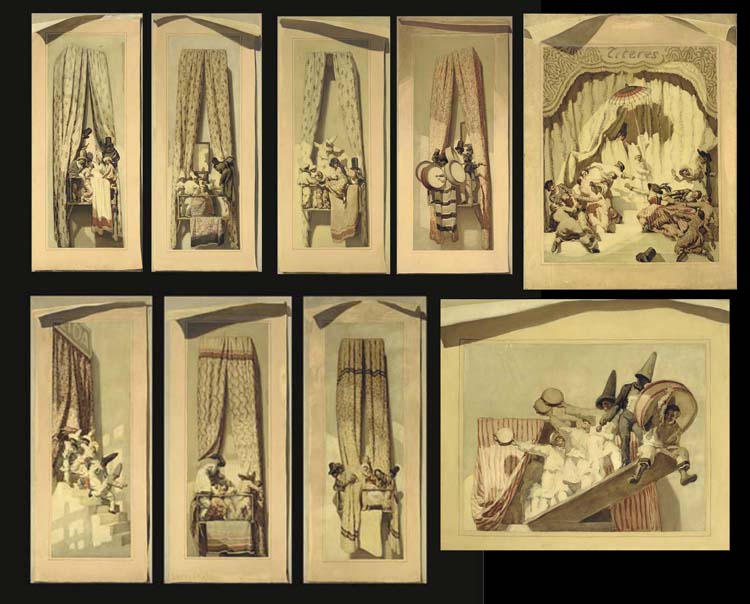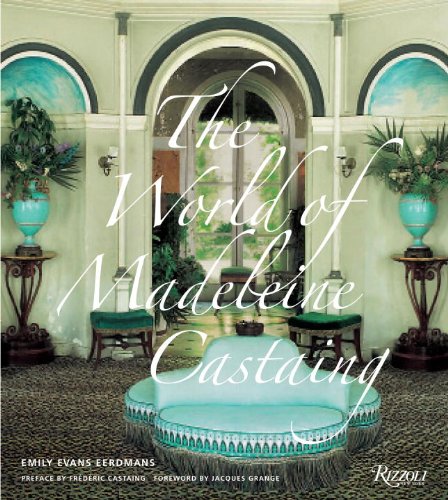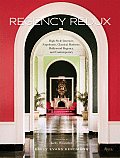Mona Williams captured by Cecil Beaton who included her in his pantheon of greats (cf. The Glass of Fashion)
Where others might dive into a surfeit of ormolu and opulence with such ample means newly at their disposal, Mona kept it (relatively) spare and simple. And as all my designer friends know, "less" is a lot more unforgiving than "more."
The Delano and Aldrich house at 1130 Fifth acquired by the Williams in 1928
For both their Manhattan townhouse and their Palm Beach residence, the Williams turned to Syrie Maugham for the right balance of blanc de Baroque. I recently stumbled across these photos of the townhouse's dining room taken in 1931.
My first thought was to question Mona's mythical status as it seemed more depressingly stark than glamorously so. However all was soon explained when I read the inscription: "to be used by Mr. Sert in drawing murals."
Jose Maria Sert's murals
These murals, nine in all, by "Tiepolo of the Ritz" Jose Maria Sert (Spanish, 1874–1945), were sold at Parke-Bernet in 1952, shortly before Harrison's death. They were acquired by Ruxton and Audrey Love whose collection was sold in 2004 by Christie's. (Lament not - Sert completed another commission for the Williams' Long Island residence which Mona ultimately took with her to Capri). In 1954, Beaton's "rock crystal goddess" married her secretary, Eddy von Bismarck, and added Countess to her well-selected adornments.
Such was Mona's verve even in the domain of real estate that the Palm Beach residence was bought lock, stock and barrel by Jayne and Charles Wrightsman.
The Williams in Palm Beach in their Maugham-decorated living room, depicted by Beaton
Only the Maugham-installed wallpaper stayed after the Wrightsmans became Francophiles and entrusted the room to Stephane Boudin of Jansen, followed by our man Henri Samuel. The exuberant reupholstery was a later Deming and Fourcade update. Supposedly, upon seeing further estimates from Denning and Fourcade, Charles Wrightsman thought it better to sell the house…
P.S. Apologies if my prose seems rambling or overdone or just poorly edited - in an attempt to re-enter blogging, time polishing must be sacrificed…
















7 comments:
Rambling or overdone or just poorly edited? None of those – I can just say I'm glad to see you back blogging again.
The demolition of the Williams-Wrightsman house was one of the great losses of Palm Beach. (Now the hideous $100 million replacement will be demolished). Fortunately, the townhouse has been restored to a single family residence.
The chinoiserie paper from Palm Beach ended up in the Dining Room of Pierre Berges Paris apartment...I think it was sold in the YSL auction a few years ago.
'TITERES' the title written on Serts' murals...Spanish for 'PUPPETS'...wonder if there was a hidden message for those dinner guests unbeknownst to the Williams but for the giggles of Sert, Misia and Chanel!
I wonder if theres a pic of the room with the murals en situ?
Welcome back
Herts
Emily I agree, it is so good to see you back with such a fascinating post and also such interesting comments.
xoxo
Karena
The Arts by Karena
Jackson Pollock
It is "Denning" (not Deming) and Fourcade.
Of course the Wrightsmans bought it lock, stock and barrel. They were parvenu...social-climbers who were only just beginning to discover what money could buy - other people's taste; Boudin's was a name that would have meant nothing to them. Things changed, of course. Plain Jane became Jayne; and just as she gave-up any pretense of personal independence in order to enjoy Charlie Wrightsman's money, her submission to Boudin's good taste resulted in a genuinely sensational interior in that house. Her double-submission has also been a great bonanza for the Met, of course. I imagine the grubby lot who currently run it are marking the days on their calendars till they get her remaining tables and chairs to shove into the Wrightman galleries.
Still, with the Palm Beach house destroyed, and no heirs to carry the Wrightsman name, I suppose that is as good as legacy for them as any. I am not quite that being Prima Donna of the arrivistes was worth all that sacrificing though.
Post a Comment